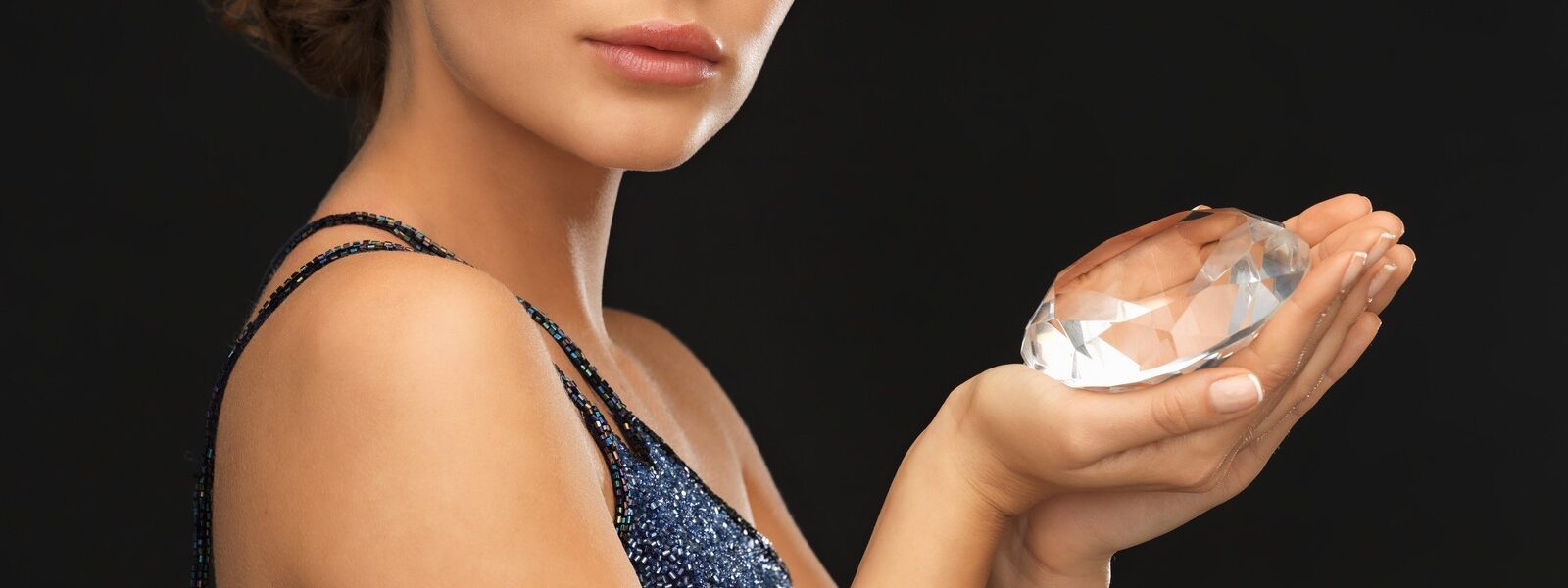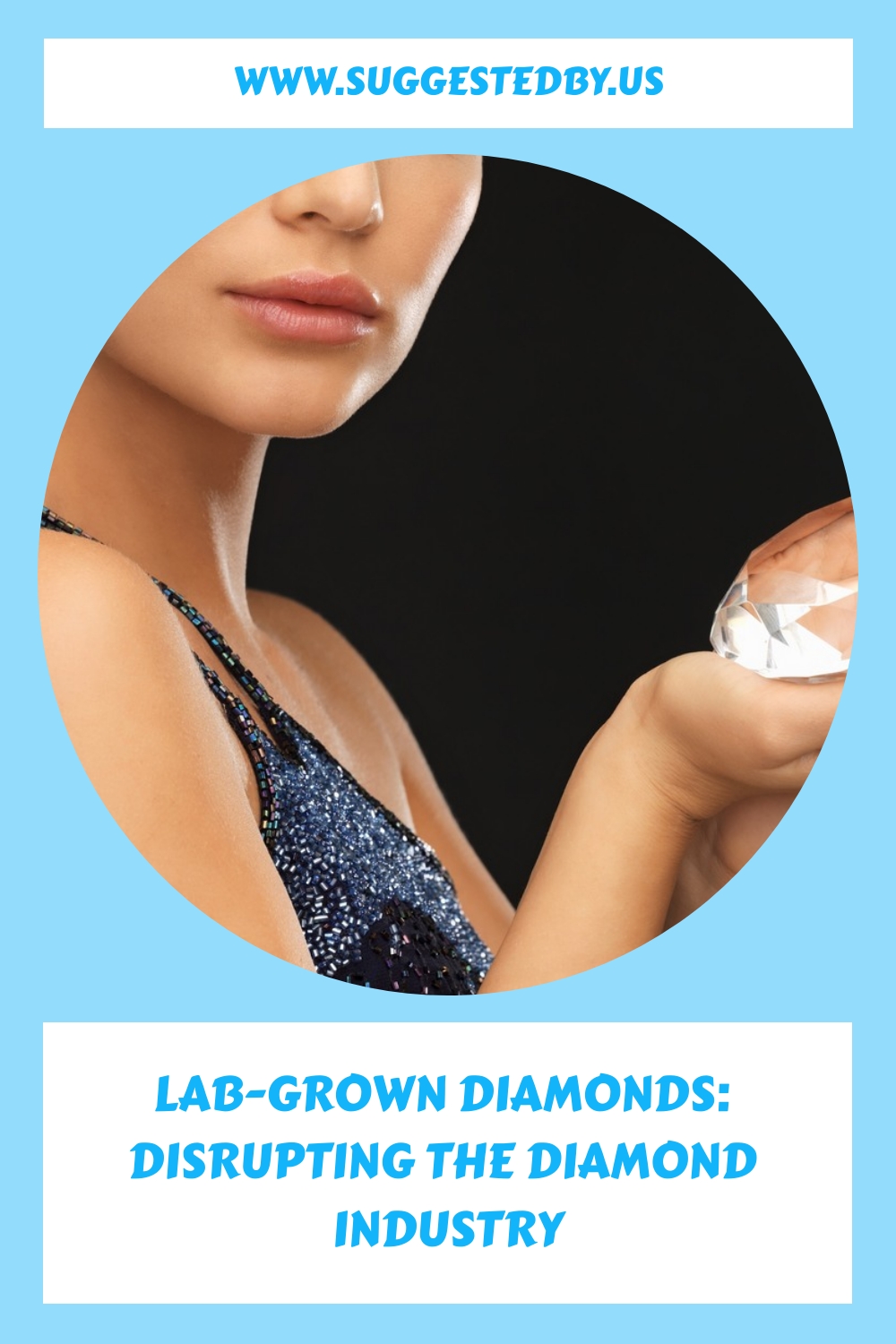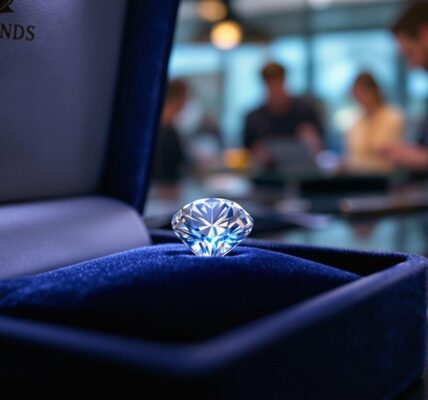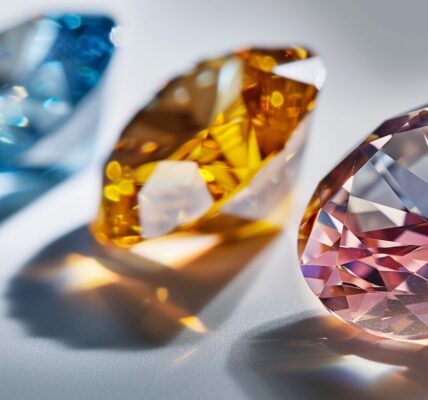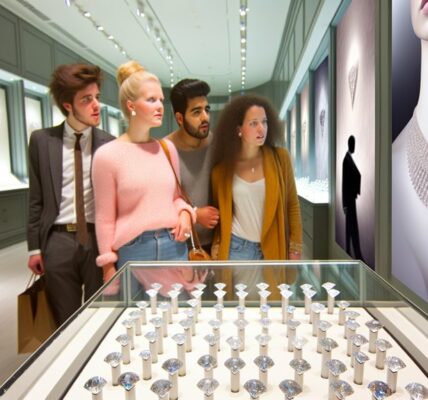Lab-grown diamonds are revolutionising the diamond industry by offering identical stones at a lower price. With recent advancements in technology, these diamonds can be grown in a matter of weeks and are about two-thirds the price of mined diamonds. In this blog post, we will explore the impact of lab-grown diamonds on the industry and their potential beyond the jewellery market.
Article Contents
Key Takeaways About Lab-Grown Diamonds
The jewellery industry faces challenges, such as being limited to the luxury market and relying on the acceptance of top designers. However, these challenges can be overcome by expanding product accessibility, fostering new talent, and exploring potential applications beyond traditional jewellery. This includes integrating wearable technology and embracing sustainable practices. The industry can grow and thrive by overcoming these challenges and exploring new opportunities.
Advantages of Lab-Grown Diamonds
Lab-grown diamonds, also known as synthetic diamonds or cultured diamonds, are becoming increasingly popular in the jewellery industry. These diamonds are created in a controlled laboratory environment using advanced technology that replicates the natural process of diamond formation. While lab-grown diamonds may not have the same historical significance as mined diamonds, they offer several advantages that make them an attractive choice for many consumers.
Identical Stones at a Lower Price
One of the biggest advantages of lab-grown diamonds is their affordability. These diamonds are typically priced at a fraction of the cost of their mined counterparts. The manufacturing process allows for greater control over the clarity, colour, and carat weight of the diamonds, resulting in consistent quality and lower production costs. As a result, lab-grown diamonds offer consumers the opportunity to purchase larger stones or higher-quality diamonds at a more budget-friendly price. Additionally, the ethical and sustainable nature of lab-grown diamonds makes them an attractive option for consumers who are concerned about the environmental and human impact of traditional diamond mining. With the increasing popularity of lab-grown diamonds, more retailers are now offering a wide selection of labgrown diamonds for sale, making them more accessible to a larger market of consumers. As the demand for lab-grown diamonds continues to grow, it is likely that prices will become even more competitive, further increasing their affordability and appeal.
Furthermore, lab-grown diamonds are virtually indistinguishable from mined diamonds to the naked eye. They have the same chemical composition and physical properties, making them identical in appearance and hardness. This means that consumers can enjoy the beauty and luxury of a genuine diamond without breaking the bank.
An Ethically Sourced Alternative to Mined Diamonds
Another significant advantage of lab-grown diamonds is their ethical sourcing. The production of lab-grown diamonds eliminates many of the environmental and social issues associated with traditional diamond mining.
Diamond mining often involves extensive land excavation, causing habitat destruction and soil erosion. It can also have a negative impact on water sources, leading to pollution and depletion. In contrast, lab-grown diamonds are created using minimal resources and have a significantly lower carbon footprint.
Furthermore, the mining of diamonds has been associated with human rights abuses, including child labour and poor working conditions. By choosing lab-grown diamonds, consumers can support ethical and sustainable practices in the jewellery industry.
Growing at a Rate of Over 15% per Year
The demand for lab-grown diamonds has been steadily increasing in recent years. According to industry reports, the market for lab-grown diamonds is growing at a rate of over 15% per year. This growth can be attributed to several factors.
Firstly, lab-grown diamonds are gaining recognition as a high-quality alternative to mined diamonds. As consumers become more educated about the benefits and indistinguishable nature of lab-grown diamonds, they are increasingly willing to consider them as a viable option for their jewellery purchases.
Secondly, millennials and younger generations are driving the demand for lab-grown diamonds. These consumers prioritize ethical and sustainable practices and are likelier to choose lab-grown diamonds over mined ones.
Lastly, lab-grown diamonds are also becoming popular in the fashion industry. Designers and retailers are embracing lab-grown diamonds for their versatility and eco-friendly appeal.
Overall, lab-grown diamonds offer several advantages, making them an appealing choice for consumers. With their identical appearance to mined diamonds, lower price point, ethical sourcing, and increasing popularity, lab-grown diamonds are shaping the future of the jewellery industry.

Recognition and Legitimacy Of Synthetic Diamonds
There is a constant need for recognition and legitimacy when it comes to diamonds. Origin, quality, and ethical sourcing are a few factors that affect the value and worth of these precious gems. In recent years, several developments in the diamond industry have aimed to enhance the recognition and legitimacy of diamonds. Let’s take a closer look at three key developments that have significantly impacted the industry.
The US Federal Trade Commission expands the definition of a diamond
The US Federal Trade Commission (FTC) plays a crucial role in establishing guidelines and regulations for the diamond industry. In 2018, the FTC expanded its definition of a diamond to include lab-grown diamonds. This decision was a significant milestone for lab-grown diamond manufacturers, as it granted them the legitimacy they had long been seeking.
Lab-grown diamonds are diamonds that are created in a laboratory rather than being mined from the earth. They have the same chemical composition and physical properties as natural diamonds. Despite this, they faced challenges in being recognized as legitimate diamonds due to the traditional definition, which only considered diamonds of natural origin.
The FTC’s decision to include lab-grown diamonds in its definition acknowledged their legitimacy and provided consumers with more transparency and choice. It allowed lab-grown diamond manufacturers to market their products as genuine diamonds, paving the way for increased acceptance and adoption of lab-grown diamonds in the industry.
Lab-grown diamonds make up 10% of the industry
Lab-grown diamonds have been steadily gaining popularity in recent years. As consumers become more environmentally and socially conscious, there has been an increased demand for ethically sourced diamonds. Lab-grown diamonds, produced without environmental damage or human exploitation, offer a sustainable alternative to mined diamonds.
According to industry reports, lab-grown diamonds currently comprise approximately 10% of the diamond market. While this may seem like a small percentage, it represents a significant and growing segment within the industry. In 2022, lab-diamond sales accounted for just 2% of sales! As consumer awareness and acceptance of lab-grown diamonds continue to rise, their market share is anticipated to continue to expand.
Lab-grown diamonds are not only recognized for their ethical and sustainable qualities but also for their competitive pricing. They are often priced lower than their natural counterparts, making them an attractive option for budget-conscious consumers without compromising on quality or beauty.
Tiffany & Co. discloses the origin of all diamonds
Tiffany & Co., one of the world’s most renowned luxury jewellery brands, has taken a bold step towards enhancing the recognition and legitimacy of diamonds. Since 2019, the company has disclosed the origin of all newly sourced, individually registered diamonds weighing 0.18 carats or more.
To give customers complete transparency about the sourcing and journey of their diamonds, Tiffany & Co. is taking this action. By disclosing the origin of their diamonds, the company aims to assure customers that their diamonds are ethically and responsibly sourced from known mines. This level of transparency not only adds to the recognition and legitimacy of the diamonds but also instills trust and confidence in the brand.
Tiffany & Co.’s commitment to disclosing the origin of diamonds sets a precedent for the industry. It encourages other diamond companies to prioritize transparency and ethical practices, ultimately raising the bar for the entire industry.
The recognition and legitimacy of diamonds play a crucial role in the industry. The developments discussed above, including the expansion of the FTC’s definition of a diamond, the growing market share of lab-grown diamonds, and Tiffany & Co.’s commitment to disclosing the origin of diamonds, have all contributed to enhancing the recognition and legitimacy of diamonds.
These developments cater to consumers’ evolving preferences and values and contribute to a more sustainable and transparent diamond industry. As the industry continues to evolve, it is essential for all stakeholders to prioritize recognition and legitimacy, ultimately ensuring a brighter and more responsible future for diamonds.
Challenges and Potential To the Growth Of Lab Diamonds
While the jewellery industry holds a prominent position within the luxury market, it also faces its fair share of challenges. From being limited to this particular market to relying on the acceptance of top designers and brands, the industry is not without its hurdles. However, these challenges also present opportunities for growth and potential applications beyond the jewellery industry.
1. Limited within the luxury market
The jewellery market primarily caters to the luxury segment, targeting affluent customers who have the means to purchase high-end pieces. This narrow focus presents a challenge for the industry, as it limits its reach and potential customer base. While luxury consumers are willing to invest in fine jewellery, the market penetration is limited due to the high price points associated with these products.
To overcome this challenge, the jewellery industry needs to explore avenues to make its products more accessible to a wider audience. This could involve introducing more affordable lines or developing partnerships with popular retailers to increase distribution channels. By expanding its reach beyond the luxury market, the industry can tap into new customer segments and drive overall growth.
2. Dependent on top designers’ acceptance
In the world of jewellery, the acceptance and recognition of top designers and brands play a significant role. Their endorsement has the power to make or break a jewellery piece’s reputation and desirability. This dependency on the acceptance of a select few designers poses a challenge to other talented individuals and emerging brands trying to make a mark in the industry.
To overcome this challenge, the industry should encourage diversity and foster an environment that embraces new talent. Platforms that support independent designers and jewellery artists can provide a stage for them to showcase their creations and gain recognition. Additionally, establishing collaborations between established and emerging designers can help bridge the gap and bring fresh perspectives to the market.
3. Potential applications beyond the jewellery industry
While the jewellery industry may be currently limited to producing accessories, there is untapped potential for applications beyond traditional pieces. Technology advancements and evolving consumer preferences open up avenues for innovation and expansion into new areas.
One potential application is the integration of wearable technology into jewellery. With the rise of smartwatches and fitness trackers, incorporating technology into jewellery pieces can elevate their functionality and appeal to tech-savvy consumers. This fusion of fashion and technology can create new opportunities for growth and attract a younger audience.
Another potential application is the use of sustainable and ethical materials in jewellery production. As consumers become more conscious of their environmental impact, there is a growing demand for eco-friendly and responsibly sourced products. By embracing sustainable practices and materials, the jewellery industry can tap into this market and differentiate itself from competitors.
The Future Of Lab-Grown Diamonds
Overall, the future looks bright for lab-grown diamonds. They expand the market for fine jewellery to a much wider group of consumers, they have environmental and ethical benefits, they cost much less than mined diamonds, and they are supported by major brands within the diamond and costume jewellery industries.
My main concern is that as the market share of lab diamonds grows, it may shift how we perceive diamonds as a whole. Of course, diamonds will not be any less beautiful as long as standards for cutting and polishing are maintained, but our perceptions may shift. We may no longer think of ‘a diamond is forever’ in a few years. Instead, we might see diamonds as just another sparkly thing with no more status or value than cubic zirconia or semi-precious stones. In my opinion, that will be a cultural loss!
The way we perceive diamonds, whether natural or lab-grown, will almost certainly be a product of the way that lab-grown diamonds are marketed. For now, that is something we know very little about and will probably end up being a reaction to short-term situations in the consumer economy.
